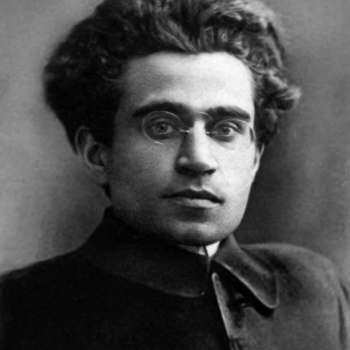The Gaza hospital hoax, the terrorist drug, and Silicon Valley giving up on news.
The world was shocked at the news that an Israeli missile destroyed a hospital in Gaza, killing 500 people. Public opinion around the world had seemed mostly sympathetic to Israel after an army of Hamas terrorists swarmed into the country, gleefully killing 1,300 men, women, children, and babies because they were Jews.
But the hospital attack resulted in a backlash of sympathy for the Palestinians and for the Hamas cause.
It turns out, though, from incontrovertible evidence, that the explosion came from a rocket aimed at Israel that misfired and landed in Gaza. It didn’t hit the hospital, but landed in the parking lot. The explosion didn’t kill 500 hospital patients, maybe at most 50 people who were in the area. The hospital is still standing, as can be seen from satellite photographs. The pictures of rubble were from another building.
When these facts came out–from numerous independent investigators studying the event with the help of videos, satellite imagery, and audio interceptions of Hamas conversations–most news agencies backtracked on their original stories. But I’m still hearing Hamas apologists bringing up how Israel killed 500 Palestinians by blowing up a hospital.
See Becket Adams, With their Israel coverage, are the media trying to start World War III?
The Terrorist Drug
The atrocities that Hamas committed against Israeli civilians are so horrible that they are hard to fathom. (I won’t link to the videos or the graphic descriptions. You can find them easily enough online.) How could anyone do such things to human beings? How could anyone be so unfeeling?
One explanation is that the terrorists were on drugs. Specifically, an amphetamine known as Captagon. Israeli troops are finding the pills stuffed into the pockets of terrorists they have killed.
From the Jerusalem Post:
This stimulant drug, also known as the “cocaine for the poor,” allowed the terrorists to commit heinous acts with a sense of calmness and indifference. Simultaneously, it kept them highly alert for extended periods and suppressed their appetite.
Captagon gained notoriety in 2015 when it was discovered to be used by ISIS fighters to suppress fear prior to carrying out terrorist operations. . . .
Captagon belongs to the amphetamine family and was initially developed to address attention disorders, narcolepsy, and depression. Despite its highly addictive nature and potential for inducing psychotic reactions, it continues to enjoy popularity in the Middle East due to its affordability and ease of manufacturing. In poorer countries, the drug can be purchased for a dollar or two, while in wealthier nations, it may cost up to 20 dollars per pill.
I didn’t think Islam approved of this sort of thing.
Caroline Rose, who has previously written about the drug and the Middle Eastern drug trade, doubts that it can be blamed for the atrocities. An article she wrote for the UK Telegraph [behind a paywall] states her point in the headline, Hamas atrocities have nothing to do with ‘jihadi pill’ captagon, but the deck is telling: “Just plain old-fashioned evil, in all likelihood.”
Yes, drugs like this cannot cause evil actions. But they can lower inhibitions, such as fear, so that the evil that resides in the heart can break out.
And, yes, experts expect Captagon to become a problem in the U.S. Let’s see how soon states want to legalize it.
Silicon Valley Is Giving Up on News
The internet has been catastrophic for newspapers, as people are able to get their news online for free–for example, from Google News–without subscribing to the local newspaper made out of paper. But the big news operations have been able to make up for some of that revenue drop off by putting their news online and selling advertising like other websites. They depend, in turn, on social media to drive traffic to their sites. The more page views, the more they can charge advertisers, so a story or feature that “goes viral” can be very lucrative.
Despite those benefits they receive from social media, the news industry has been demanding through the legal system that the platforms pay them for the privilege of linking to their articles. Now those platforms are deciding that the trouble is just not worth it.
Here, for example, is a story on the subject from the New York Times, which is behind a paywall but is available on Yahoo News (which I suspect pays for the privilege):
Campbell Brown, Facebook’s top news executive, left the company this month. Twitter, now known as X, removed headlines from the platform days later. The head of Instagram’s Threads app, an X competitor, reiterated that his social network would not amplify news.
Even Google — the strongest partner to news organizations over the past 10 years — has become less dependable, making publishers more wary of their reliance on the search giant. The company has laid off news employees in two recent team reorganizations, and some publishers say traffic from Google has tapered off.
If it wasn’t clear before, it’s clear now: The major online platforms are breaking up with news.
[Keep reading. . .]
But if news won’t be on the big online platforms anymore, maybe this will bring back newspaper subscriptions!
















